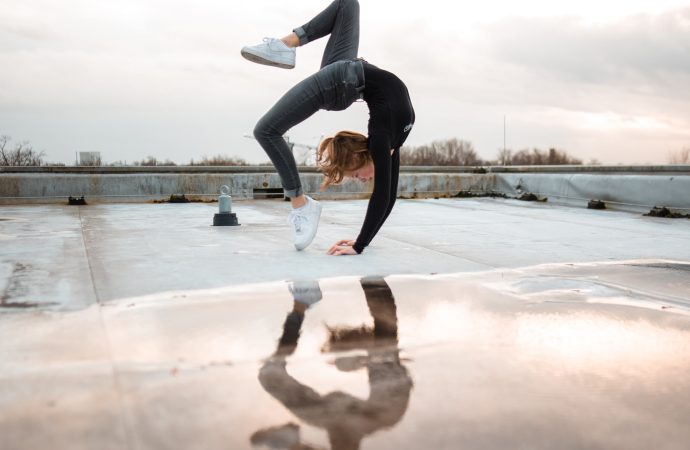Are you tired of feeling stiff and achy after a long day at work or an intense workout? Do you want to improve your flexibility and reduce your risk of injury? Look no further than stretching! Whether you’re an athlete, weekend warrior, or simply looking to feel better in your own body, stretching is the
Are you tired of feeling stiff and achy after a long day at work or an intense workout? Do you want to improve your flexibility and reduce your risk of injury? Look no further than stretching! Whether you’re an athlete, weekend warrior, or simply looking to feel better in your own body, stretching is the key to unlocking greater mobility and preventing injuries. In this blog post, we’ll explore why stretching is so important for overall health and wellness, as well as provide tips on how to make it a regular part of your routine. So grab a mat or a towel and get ready to limber up – let’s dive into the world of stretching!
The benefits of stretching
Stretching is a vital part of any workout routine, whether you are a seasoned athlete or just starting out. It helps improve flexibility and prevent injuries by lengthening your muscles and improving your range of motion.
There are many different types of stretching exercises, so you can find one that fits your needs and goals. Static stretches are held for a longer period of time, while dynamic stretches are performed with movement. Both types of stretching have their own benefits.
Static stretching is best used after a workout when your muscles are warm and pliable. This type of stretch helps to improve flexibility by lengthening the muscle tissue. Dynamic stretching is more beneficial before a workout as it helps to loosen up the muscles and prepare them for activity.
Here are some of the benefits that stretching can provide:
-Improved flexibility
-Increased range of motion
-Prevention of injuries
-Reduced muscle soreness
-Improved circulation
Why stretching is important
Stretching is an important part of any fitness routine, helping to improve flexibility and prevent injuries. While there are many different ways to stretch, the most important thing is to do it regularly.
One of the main benefits of stretching is that it can help to prevent injuries. When muscles are tight, they are more likely to be strained or sprained. By keeping them flexible, you can help avoid these types of injuries.
Another benefit of stretching is that it can improve your range of motion. This means that you’ll be able to move your joints through a greater range of motion, making everyday activities easier. It can also help improve your posture and reduce pain in the lower back and other areas of the body.
If you’re new to stretching, there are a few things to keep in mind. First, be sure to warm up before you start stretching. A simple way to do this is by walking for a few minutes or doing some light cardio. Second, don’t bounce when you stretch. Instead, hold each stretch for 20-30 seconds and breathe deeply throughout. Finally, focus on your breath and relaxation as you stretch; this will help your muscles let go and achieve a deeper stretch.
The different types of stretches
There are four main types of stretches: static, dynamic, ballistic, and PNF.
Static stretches are the most common type of stretching. You slowly move into a position and hold it for a period of time, usually 10-30 seconds. This is an effective way to improve flexibility.
Dynamic stretches involve moving your body or limbs through a range of motion. These are often done as part of a warm-up before physical activity. Ballistic stretching is similar to dynamic stretching, but with a “bouncing” motion. This should be avoided as it can lead to injuries.
PNF (proprioceptive neuromuscular facilitation) stretching is a form of stretching that uses muscle contractions to achieve a greater range of motion. PNF stretching can be done with a partner or by using an apparatus such as a theraband.
How to stretch properly
It is important to warm up before stretching, as your muscles will be more pliable and less likely to be injured. A good way to warm up is to walk or jog for 5-10 minutes before stretching.
When stretching, it is important to hold each stretch for at least 30 seconds. This allows your muscles time to lengthen and relax. Breathe deeply while stretching, and never force a stretch. If you feel pain, ease off the stretch.
There are a variety of stretches you can do to target different muscle groups. For a comprehensive stretching routine, be sure to include both static and dynamic stretches.
Static stretches involve holding a position for an extended period of time, usually 30 seconds or more. These are best done after your muscles are already warmed up.Dynamic stretches involve moving through a range of motion repeatedly, and are best done at the beginning of your stretching routine when your muscles are not yet warmed up.
Here are some examples of static and dynamic stretches:
Static Stretches:
Quadriceps Stretch: Standing with one hand on a wall for support, bend the leg behind you at the knee and grasp your ankle with your other hand. Gently pull your heel towards your buttocks until you feel a stretch in the front of your thigh. Hold for 30 seconds and then switch legs.
Hamstring Stretch: Lying on your back with both legs extended straight, loop a towel around one foot and gently lift
When to stretch
There is a lot of debate surrounding when is the best time to stretch. Some people believe that stretching before exercise helps prevent injury, while others believe that stretching after exercise is more effective. There is no right or wrong answer, it really depends on what works best for you. If you feel tight and sluggish before your workout, performing some dynamic stretches (stretches that involve movement) may help improve your range of motion and make you feel more awake. On the other hand, if you tend to be sore after your workouts, static stretches (holds for 20-30 seconds) may help reduce muscle soreness. The bottom line is that incorporating both types of stretching into your routine is the best way to reap the benefits.
Conclusion
Stretching can be a great way to improve your flexibility and reduce the risk of injury. With proper form and breathing, stretching can help you increase your range of motion and maintain healthy joints. Regular stretching should be a part of any physical activity or exercise program to keep your body limber and strong, so don’t forget to make time for it!





















Leave a Comment
Your email address will not be published. Required fields are marked with *